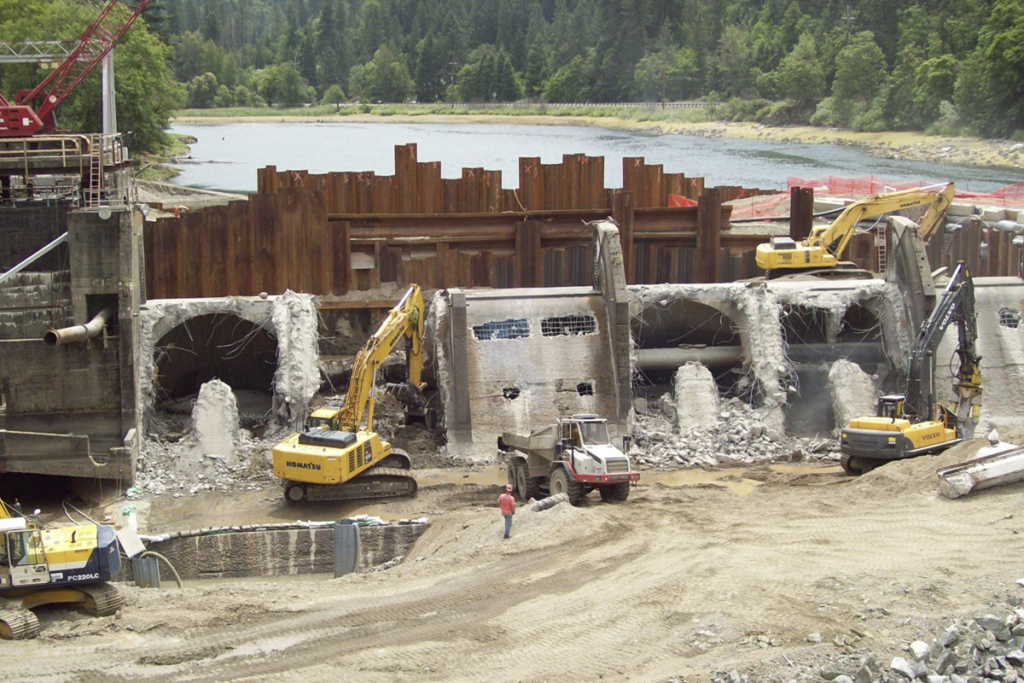EarthTalk®
From the Editors of E – The Environmental Magazine
Dear EarthTalk: Now that we are a few decades into the process of removing dams, how are the fish ecosystems doing? — H.F., Boulder, CO

Dams, often built to generate hydroelectric power, store water and control floods, have significant negative impacts. They disrupt natural river flows, fragment habitats and alter the physical, chemical and biological characteristics of their river. When ecosystems are functioning properly, they support a wide variety of plant and animal life, providing crucial benefits to the environment and local communities. A healthy river is marked by clean water, diverse plant and fish life and the ability to transport sediments that replenish beaches and floodplains, all working together sustain life and adapt to ecosystem changes.
As the dam removal process has progressed in the U.S., scientists have seen significant improvements in waterway ecosystems. A long-term study that monitored the Cedar River in Washington state after dam removal showed a remarkable recovery in local fish populations. In the 20 years following the removal of the dam, chinook salmon, coho salmon and mountain whitefish returned to pre-dam population levels. The chinook salmon reached the river’s carrying capacity—the maximum number of fish the river can support. Also, salmon diversity tripled. This demonstrates the long-term benefits of river restoration through dam removal and highlights the potential for ecosystems to recover when natural flow is restored.
In another example, the removal of dams along the Klamath River in California is also helping restore native fish populations. While the deconstruction of the dams initially led to the death of non-native fish species, it paved the way for native fish—like-chinook salmon and steelhead—to migrate upstream for the first time in over 60 years, offering hope that the river will once again become a thriving ecosystem for its native species. According to Bob Pagliuco, a NOAA marine habitat resource specialist, the Klamath River will soon see the return of these iconic fish species to areas where they had been absent for decades.
Dam removal has benefits beyond increased fish populations, allowing for vegetation regrowth, natural sediment transport, better water quality and safe spaces for fish from predators.
Despite these benefits, dam removal remains controversial. But by raising awareness, advocating for policy change and engaging the public through protests, the tide can be turned. Supporting legislation like the Clean Water Act is also crucial. By staying informed and actively participating, we can ensure the long-term health of our rivers and a future with thriving ecosystems and abundant wildlife.
CONTACTS: The Secret World Of Rivers: What Do Healthy Rivers Look Like?, https://ribbletrust.org.uk/what-do-healthy-rivers-look-like/; World’s Biggest Dam Removal Project to Open 420 Miles of Salmon Habitat this Fall, https://www.fisheries.noaa.gov/feature-story/worlds-biggest-dam-removal-project-open-420-miles-salmon-habitat-fall
EarthTalk® is produced by Roddy Scheer & Doug Moss for the 501(c)3 nonprofit EarthTalk. See more at https://eagazine.com. To donate, visit https://earthtalk.org. Send questions to: question@earthtalk.org.
Viewers are encouraged to subscribe and join the conversation for more insightful commentary and to support progressive messages. Together, we can populate the internet with progressive messages that represent the true aspirations of most Americans.